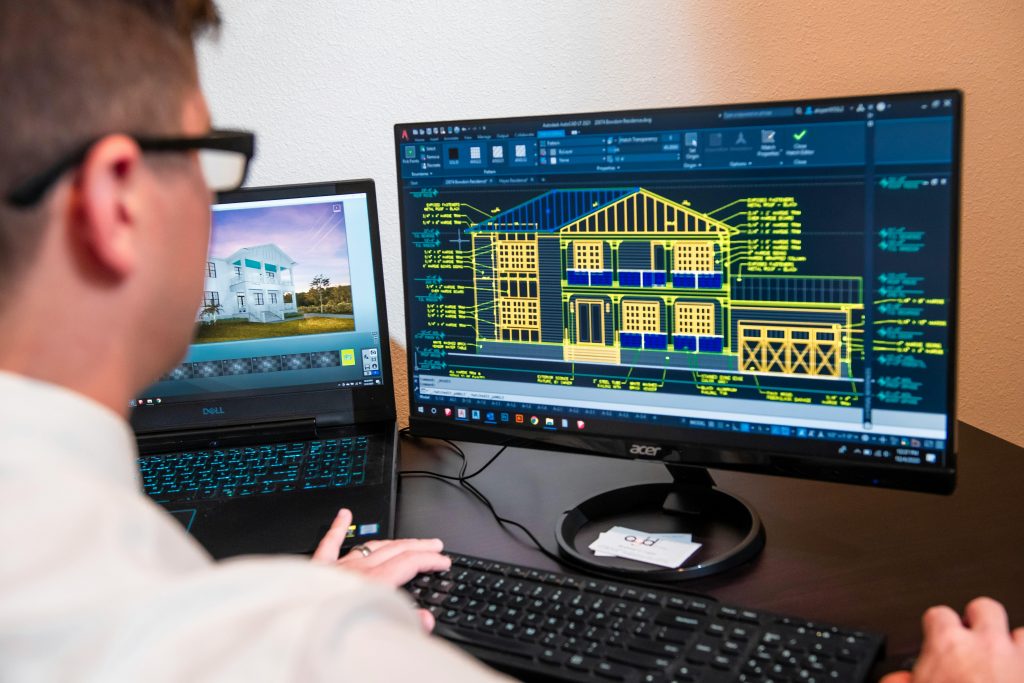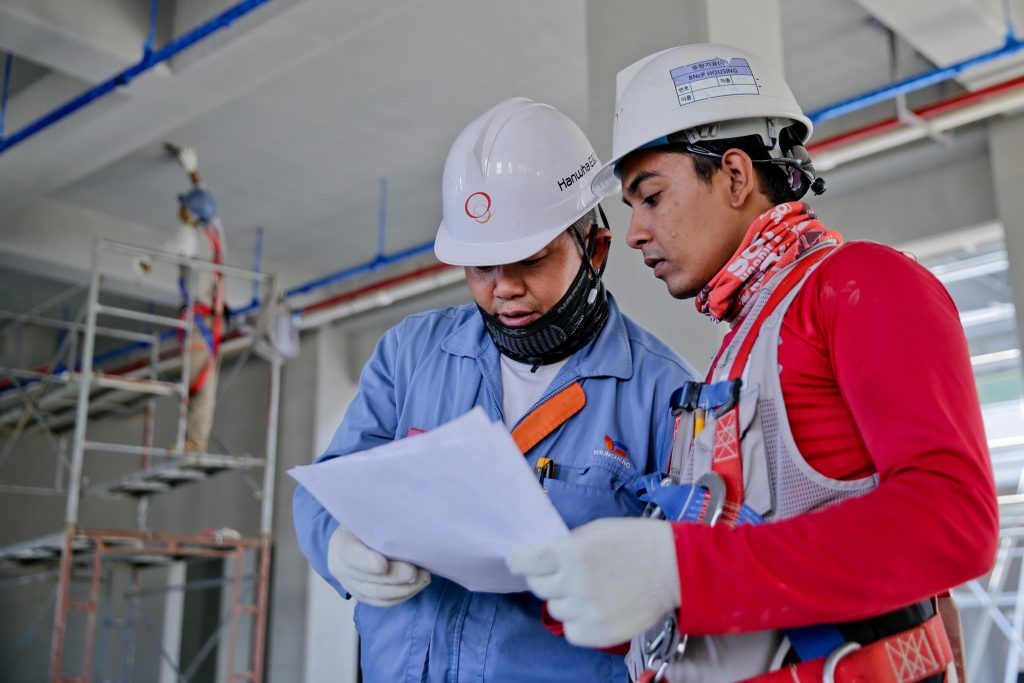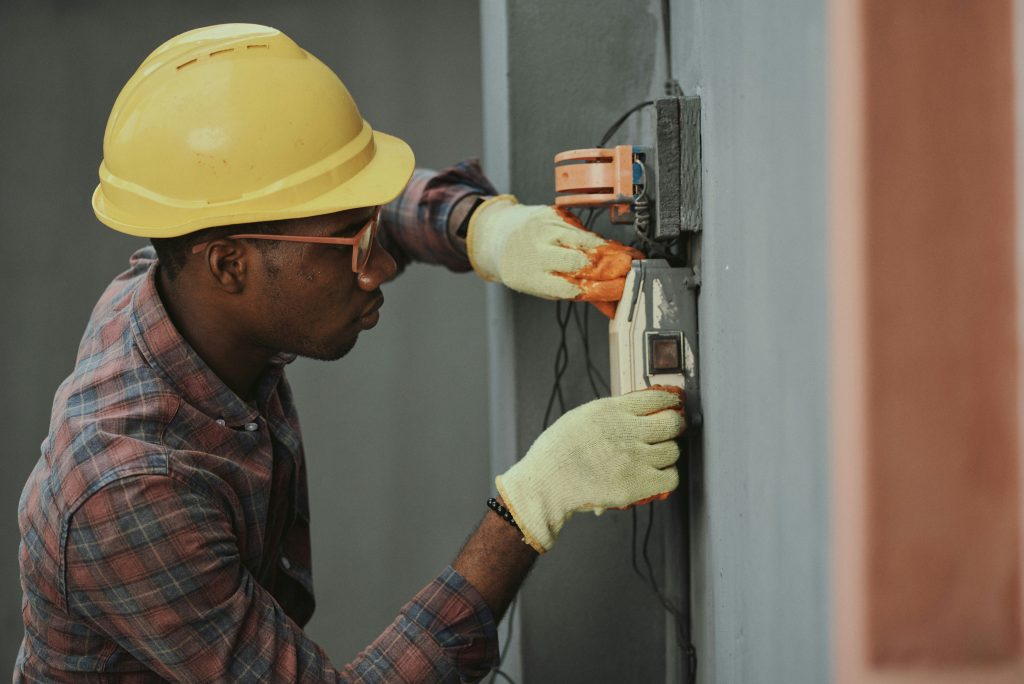Antonio Silvestre
apr 28, 2025 • 13 min read

The global construction industry, worth an estimated $10,000,000,000,000 of the global economy, has historically lagged in productivity. Yet, according to ResearchDive, A
AI opens the possibility of closing the productivity gap concrete #1. (Report is her.)
Policies worldwide are encouraging AI adoption. For example, U.S. President Donald Trump signed executive orders in 2019 and in January 2025, ostensibly to prioritize American leadership in AI. Such executive orders suggest top-down support for AI integration into industries like construction.
Below, we explore five powerful ways AI and automation are revolutionizing BIM in construction, with real-world applications and business implications in each area.
One of the most transformative applications of AI in BIM is generative design, where algorithms rapidly produce and evaluate hundreds of design options based on specified goals. Instead of manually drafting one or two plans, architects can let AI suggest myriad layouts optimized for factors like space usage, energy efficiency, cost, and even aesthetics. For example, Autodesk’s Project Discover was used to design their Toronto office, generating floorplans by processing employee preferences (e.g. daylight and adjacencies) to create an optimal layout for a 60,000 sq. ft workspace archistar #1 archistar #2.. Generative design tools integrated with BIM enable teams to:
The business impact is significant: faster design approvals, fewer change orders, and more innovative, client-pleasing designs. By embracing AI in the design phase, commercial developers can optimize layouts of office towers or malls for maximum leasable space and energy savings, residential builders can rapidly configure tract housing to client specs, and renewable energy planners can automatically position solar panels or wind turbines for peak efficiency. AI-driven BIM design results in climate-compatible, cost-effective buildings with fewer errors – all delivered in less time concrete link.
Delays and cost overruns plague construction projects, but machine learning (ML) is helping project teams get ahead of these challenges. By analyzing BIM data and historical project records, AI can predict potential schedule slips, budget issues, or risks før they escalate. This predictive power transforms BIM from a static 3D model into a dynamic, intelligence-driven project dashboard.
AI-powered planning tools can automatically generate and adjust construction schedules. Researchers have demonstrated ML systems that produce construction schedules directly from BIM models by learning from past projects mdpi.com. In the field, solutions like Oracle’s Construction Intelligence Cloud continuously monitor project data to flag likely delays and suggest corrective actions oracle #1.
Similarly, ALICE Technologies’ AI platform can re-sequence tasks on the fly – if a delivery is late or a crew falls behind, the software proposes new schedules and resource allocations to keep the project on track blog.alicetechnologies #1. This kind of 4D BIM (3D + time) simulation allows teams to test “what-if” scenarios in advance blog.alicetechnologies #1, finding the most efficient construction path.
Key benefits of AI-driven planning include:
By leveraging predictive analytics in BIM, commercial contractors can deliver complex builds (airports, hospitals, etc.) closer to on-time and on-budget, residential developers can anticipate supply chain hiccups (like lumber price spikes) and adjust procurement, and renewable energy projects can streamline construction of wind and solar farms despite weather and permitting uncertainties.
In a global context, improving construction efficiency has huge economic upside – McKinsey estimates that closing the construction productivity gap could add $1.6 trillion per year to the world economy mckinsey link. AI-driven BIM planning is a key part of seizing that opportunity.
On the jobsite, AI isn’t just living in the computer – it’s controlling robots and automated machines that execute construction tasks with speed and precision. When tied into BIM models, these construction robots can perform labor-intensive work exactly to spec, revolutionizing how structures are built. Automation in construction ranges from robotic arms and 3D printers to autonomous vehicles and drones, all working from digital plans.
A prime example is the use of robotics for repetitive tasks like rebar tying and layout. The TyBOT robot (from Advanced Construction Robotics) can automatically tie steel rebar intersections on bridge decks at a rate of over 1,100 ties per hour canada.constructconnect link – far faster than human workers and without fatigue. Its companion, IronBOT, lifts and places heavy rebar bars in position, doing the grunt work so humans don’t have to canada.constructconnect link one canada.constructconnect link two.
Together, these robots read the rebar layout from the BIM design and handle the installation autonomously. Contractors deploying TyBOT have seen significant time savings and a reduction in musculoskeletal injuries for workers (since tying rebar manually is physically strenuous).
Other real-world applications of BIM-driven automation include:
For business leaders, the value of automation is twofold: higher productivity and improved safety. Robots can work around the clock and handle hazardous tasks, which shortens project timelines and reduces accidents. One case study found that applying robots and AI on site led to 20% faster project completion and 25% fewer workplace injuries blog.lidarnews link blog.lidarnews another.
In commercial construction, that means earlier openings and revenue generation for facilities; in residential building, it could help alleviate housing backlogs by speeding up production; and in large-scale renewable energy farms, automation helps meet aggressive deployment targets (like installing thousands of panels) despite workforce constraints. While upfront investment in robotics is high, the ROI in terms of labor savings, risk reduction, and consistency is proving substantial. Automation, guided by BIM and AI, is turning construction into a more manufacturing-like process, with predictable outcomes and lower variability.
Construction sites are inherently risky, but AI is dramatically improving safety oversight and risk management when integrated with BIM. Traditionally, safety compliance – from checking if workers wear harnesses to spotting fire hazards – relied on human supervisors. Now, computer vision and sensor data analyzed by AI provide 24/7 vigilant monitoring that no human can match.
AI systems can watch live video feeds from site cameras and automatically detect unsafe situations. For example, image recognition algorithms can flag if a worker on the BIM-modeled site isn’t wearing required protective gear or if someone enters a restricted zone. These alerts allow managers to intervene immediately.
In one approach, drones patrol the site and AI examines their footage to identify dangers like uncovered holes or structural instability signs, which are then pinpointed on the BIM for quick action blog.richardvanhooijdonk link. This level of real-time awareness has helped reduce serious incidents. In an industry with one of the highest worksite fatality rates globally, such AI-powered oversight is a game changer concrete link.
Consider some concrete ways AI is elevating construction safety:
The business impact of AI-enhanced safety is not just fewer injuries (a human imperative) but also dollars-and-cents benefits. Safer sites mean lower insurance premiums, less downtime, and higher workforce morale. Automation of compliance and reporting saves managers time and reduces the chance of regulatory penalties. For example, after implementing an AI safety system with computer vision, one large contractor reported a 38% reduction in safety violations on-site concrete link concrete next link.
In renewable energy construction (like wind farms spread over wide areas), AI drones can cover ground faster than human inspectors, ensuring remote parts of the site are safe and built to spec. Ultimately, integrating AI with BIM for safety transforms risk management from a reactive process into a proactive, predictive one – protecting both workers and the project’s financial health.
Sustainability is a growing priority in construction, and AI-enhanced BIM is helping architects and builders make greener, smarter decisions. By analyzing complex datasets – from energy models to supply chains – AI can optimize designs and construction processes for minimal environmental impact and maximal efficiency. This is especially crucial in sectors like renewable energy construction, where projects like solar farms and wind parks must be both economically and ecologically sound.
One way AI contributes is by improving materials and energy efficiency in designs. Machine learning can crunch data on building energy performance to suggest modifications in a BIM model that reduce operating costs. For instance, AI can recommend the optimal placement of windows, shading, and HVAC systems in a commercial building model to cut energy usage, or propose alternative materials that lower the project’s carbon footprint.
In the United States, a startup called Concrete.ai applies AI to create high-performance concrete mixes tailored to each project’s needs. By sifting through hundreds of thousands of formulations, the AI finds a blend that meets strength requirements while using less cement (which in turn cuts carbon emissions) concrete link. One client was able to significantly reduce their carbon footprint by using an AI-designed low-carbon concrete mix without sacrificing performance concrete link. This illustrates how AI and BIM data (in this case, structural requirements from the BIM) combine to drive sustainable outcomes.
In the context of renewable energy projects, AI is proving invaluable as well:



Importantly, supportive government policies are accelerating the sustainability drive. Incentives for energy-efficient buildings and clean energy (such as tax credits or standards) align with what AI in BIM delivers – data-driven efficiency. Even trade policies can indirectly push firms towards innovation; for instance, tariffs on construction materials (like the U.S. steel tariffs under Trump that raised steel prices ~14% constructiondive link) make waste reduction and alternative materials more attractive.
AI helps companies adapt to these external pressures by optimizing designs to use less of expensive inputs and source materials smarter. In short, AI and automation in BIM not only make construction faster and cheaper, but also greener and more adaptive to the global push for sustainability.
AI and automation are no longer experimental in the construction industry – they are practical tools delivering real ROI today. From the earliest design sketches to long-term facility management, AI-enhanced BIM is enabling smarter decisions at every step. Commercial developers are using generative design to create more profitable and occupant-friendly buildings. Residential builders leverage machine learning to prevent delays and cost overruns in housing developments.
Renewable energy firms deploy AI-driven planning and robots to accelerate solar and wind installations critical to our energy future. These transformations are happening against a backdrop of global economic headwinds and opportunities: labor shortages, high material costs, sustainability mandates, and the promise of AI contributing trillions to GDP. Forward-looking firms that invest in AI for BIM now are positioning themselves to lead in productivity and innovation, while laggards risk being left behind in a rapidly digitizing market.
Business leaders should take away that AI in construction is not about replacing humans, but augmenting teams to build better. As one construction tech CEO noted, the goal is a balanced human-machine collaboration, not a dystopian fully automated site concrete link second concrete.ai link.
People will always be central to construction, but empowered by AI, they can focus on higher-level problem solving while machines and software handle the grunt work and data crunching. We’ve highlighted five powerful ways AI and automation are revolutionizing BIM: generative design, predictive planning, robotic construction, safety management, and sustainability optimization. Each of these offers compelling benefits – faster project delivery, cost savings, safer sites, and greener outcomes – that directly impact the bottom line and competitive advantage.
In the coming years, expect AI’s role in BIM to grow even more. Generative design will become standard practice, perhaps even designing entire smart cities virtually. Digital twins powered by AI will manage buildings autonomously, adjusting lighting, climate, and maintenance in real-time. And on site, construction robots will work hand-in-hand with crews, guided by AI insights from BIM models.
The companies that embrace these technologies stand to gain immensely in efficiency and capability. As the global construction landscape evolves with economic shifts and policy changes, one constant is clear: AI is set to be a cornerstone of construction’s future, driving innovation in how we build and what we can achieve. Now is the time for industry leaders to understand these trends and invest in bringing AI into their BIM workflows – the foundations you lay today will define your success in the new era of construction.
We've worked in the construction industry. Check out our website to find out more about what we do.
Antonio Silvestre